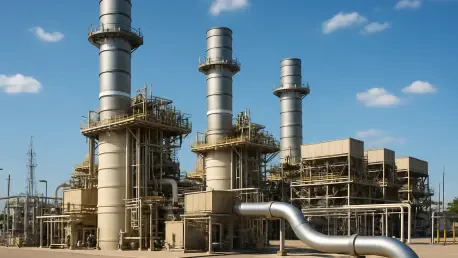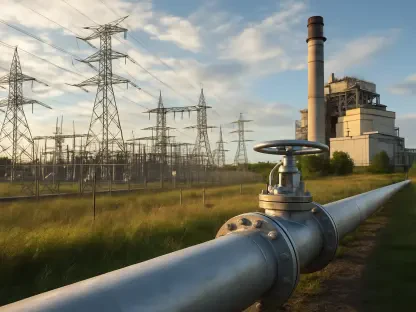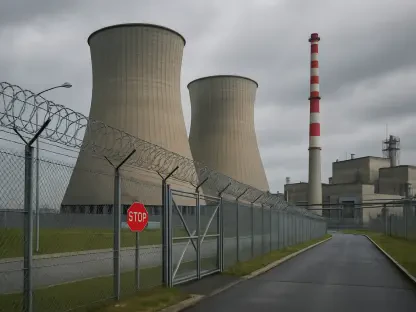As we dive into the rapidly evolving landscape of energy investments, I’m thrilled to sit down with Christopher Hailstone, a seasoned expert in energy management, renewable energy, and electricity delivery. With his deep knowledge of grid reliability and security, Christopher offers unparalleled insights into the natural gas power plant market and energy infrastructure development. Today, we’re exploring Blackstone’s recent acquisition of the Hill Top Energy Center in Western Pennsylvania, the rising value of natural gas plants, and the intersection of energy assets with cutting-edge demands like AI infrastructure. Join us as we unpack the strategic moves shaping the future of power generation.
Can you walk us through Blackstone’s recent acquisition of the Hill Top Energy Center in Western Pennsylvania and what makes this 620-MW natural gas plant such a strategic buy?
Absolutely, Silvia. The Hill Top Energy Center is a significant addition to Blackstone’s portfolio, particularly through their Energy Transition Partners arm. This 620-MW natural gas plant, acquired for nearly $1 billion, stands out due to its modern infrastructure and prime location in Western Pennsylvania. It’s positioned in the PJM market, a critical region for power demand, especially with the surge in data center development tied to AI and digital infrastructure. Strategically, it’s not just about capacity; it’s about owning an asset that can meet future energy needs in a high-growth area while offering reliability and efficiency, which are key for both investors and grid operators.
How does the price tag of about $1,600 per kilowatt for Hill Top compare to other recent deals in the natural gas plant market, and were you surprised by this valuation?
The $1,600 per kilowatt price point is notably higher than some other recent transactions we’ve seen. For instance, Vistra’s deal earlier this year came in at around $743 per kilowatt for a larger portfolio, and NRG paid about $760 per kilowatt for capacity in Texas. I wasn’t entirely surprised, though, because valuation often hinges on specific factors like the plant’s age, technology, and location. Hill Top is described as one of the newest and most efficient plants, and being in Pennsylvania—a hub for energy demand—likely drove up the cost. It reflects a broader trend of rising values in this sector, with total deal values hitting over $4.3 billion in 2024 alone.
What’s behind the surge in natural gas plant acquisition values, with deal totals jumping from $3.1 billion in 2023 to over $4.3 billion this year?
The surge is driven by a confluence of factors. First, there’s a growing recognition of natural gas as a reliable bridge fuel during the energy transition—offering stability as renewables scale up. Second, demand for power is skyrocketing, particularly from data centers and AI infrastructure, which require consistent, high-capacity energy sources. Additionally, the scarcity of newer, efficient plants like Hill Top pushes up prices. Location plays a huge role too; plants in high-demand regions like the PJM market are commanding premiums because they’re so well-positioned to meet both current and future needs.
Blackstone has highlighted Hill Top as one of the most efficient combined cycle gas turbine plants in the country. Can you shed some light on what technologies or features might contribute to that efficiency?
Certainly. Combined cycle gas turbine plants like Hill Top are designed to maximize energy output by using both gas and steam turbines in tandem. The gas turbine generates electricity, and the waste heat from that process is captured to produce steam, which drives a second turbine for additional power. This dual process significantly boosts efficiency compared to older, single-cycle plants. While specifics on Hill Top aren’t public, it’s likely equipped with state-of-the-art turbine technology, advanced control systems, and optimized maintenance protocols, all of which minimize energy loss and enhance performance, making it a standout in terms of operational excellence.
How does Hill Top’s location and capabilities tie into powering America’s AI future, as Blackstone described in their announcement?
Hill Top’s positioning in Western Pennsylvania within the PJM market is key here. This region is becoming a focal point for data center development, which is directly linked to the AI boom. AI infrastructure demands enormous amounts of reliable power—think 24/7 uptime for massive server farms. Hill Top, with its high efficiency and substantial capacity, is ideally situated to supply that energy. Blackstone’s mention of it being a strategic hub suggests they see it as a cornerstone for meeting these new, tech-driven power demands, potentially through direct agreements with data center operators or other high-energy consumers in the area.
Given Blackstone’s other recent moves, like acquiring the Potomac Energy Center earlier this year, how does Hill Top fit into their broader energy strategy?
Hill Top aligns seamlessly with Blackstone’s focus on building a robust portfolio of high-performing, strategically located energy assets. Like Potomac, which is also noted for its efficiency and potential for innovations such as hydrogen fuel blending, Hill Top represents a commitment to assets that can support both current grid needs and future energy transitions. Blackstone seems to be targeting plants that offer flexibility—whether through efficiency, location, or adaptability to emerging technologies. Their broader strategy appears to balance immediate returns from reliable natural gas generation with long-term plays on digital infrastructure and cleaner fuel options.
What’s your forecast for the natural gas power plant market over the next few years, especially with rising demand from sectors like AI and data centers?
I expect the natural gas power plant market to remain a hotbed of activity over the next five to ten years. The demand spike from AI and data centers isn’t slowing down anytime soon, and natural gas plants offer the reliability and capacity that renewables alone can’t yet match at scale. We’ll likely see continued upward pressure on valuations, especially for efficient, well-located assets like Hill Top. At the same time, there’ll be increasing focus on integrating cleaner technologies—think hydrogen blends or carbon capture—to align with environmental goals. For investors, it’s a space of both opportunity and complexity, as balancing profitability with sustainability will be the key challenge.









